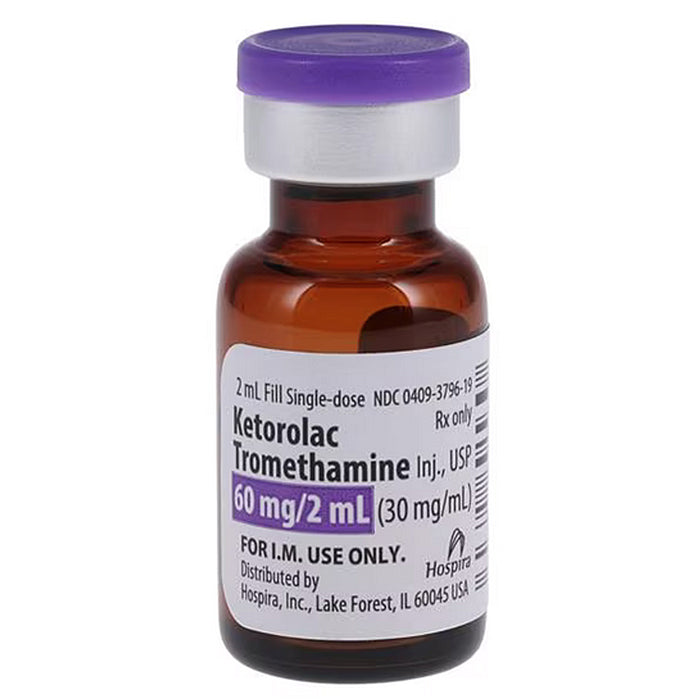Ketorolac Tromethamine Injection 60 mg/2 mL Single Dose Vials 2 mL, 25/Tray (Rx)
(Note: We don’t Fill Personal Prescriptions)
How to Order:
Ketorolac Tromethamine Injection 60 mg/2 mL is used for the short-term management of moderate to severe pain, often following surgical procedures. It belongs to the class of nonsteroidal anti-inflammatory drugs (NSAIDs) and works by inhibiting the production of prostaglandins, which are responsible for inflammation and pain. This injection provides effective analgesia by reducing pain and swelling, often serving as an alternative to opioid pain relievers. It is typically administered intramuscularly or intravenously in medical settings to enhance patient comfort and recovery.
Ketorolac Tromethamine Injection is a non-steroidal anti-inflammatory drug (NSAID) formulated for short-term management of moderate to severe pain, typically post-operative pain. This formulation provides a potent analgesic effect without opioid involvement. It is available in single-dose vials containing 60 mg of ketorolac tromethamine per 2 mL of solution. Pfizer Injectables supplies these in trays comprising 25 vials.
Details and Features:
Dosage Form: 60 mg/2 mL per vial
Packaging: 25 single-dose vials per tray
Administration Route: Intended for intramuscular (IM) or intravenous (IV) injection
Use: Short-term management of moderate to severe pain, usually no longer than 5 days
Non-Opioid: Provides strong pain relief without the risk of opioid dependence
Mechanism of Action:
Ketorolac works by inhibiting the enzyme cyclooxygenase (COX), which is pivotal in the synthesis of prostaglandins. Prostaglandins are compounds associated with inflammation, pain, and fever. By reducing prostaglandin production, ketorolac exerts its analgesic, anti-inflammatory, and antipyretic effects, providing relief from pain without the psychological effects of narcotics.
Warnings:
-
Duration of Use: Not intended for prolonged use; typically limited to a maximum of 5 days due to risks of side effects.
-
Contraindications: Patients with active peptic ulcer disease, recent gastrointestinal bleeding, or renal impairment should not use this medication. It is also contraindicated in those with a history of NSAID hypersensitivity.
-
Cardiovascular Risk: Use with caution in individuals with hypertension, cardiac disease, or a risk for stroke.
-
Gastrointestinal Risk: Long-term or high-dose use increases the risk of gastrointestinal adverse events including bleeding, ulceration, and perforation.
-
Renal Concerns: Not recommended for patients with advanced renal impairment or in patients at risk of renal failure due to volume depletion.
- Pregnancy: Safety for pregnant women has not been established, especially in late pregnancy where it may inhibit labor.
Side Effects:
Common side effects associated with Ketorolac Tromethamine Injection include:
-
Gastrointestinal: Nausea, dyspepsia, gastrointestinal pain, and in severe cases, bleeding or ulcer.
-
Renal: Increased serum creatinine, urinary frequency, or acute renal failure in susceptible individuals.
-
Cardiovascular: Hypertension, palpitations.
Central Nervous System: Headache, dizziness, somnolence.
-
Hematologic: Prolonged bleeding time.
- Hypersensitivity Reactions: Skin rashes, itching, and in rare cases, anaphylaxis.
Ketorolac Tromethamine should be administered with caution under professional medical supervision, particularly attentive to individual patient conditions and concurrent medications. Proper and monitored application ensures effective pain management while minimizing adverse effects. Patients should be evaluated regularly to assess relief and detect the onset of potential side effects.

